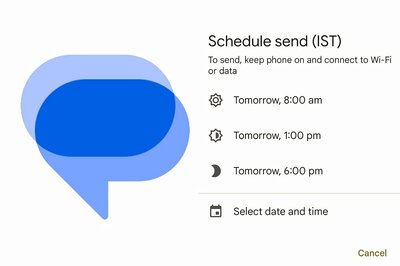
views
The layer of eye-stinging, wind pipe-choking smog lingering over Delhi-NCR thickened on Friday, lowering visibility to 200 metres at several places in the region and prompting the central pollution watchdogto issues an advisory to people asking them to avoid going outdoors. The board has also directed government and private offices to reduce vehicle usage by at least 30 per cent due to severe air pollution in the national capital. Over 4,000 farm fires, which accounted for 35 per cent of Delhi’s pollution on Friday, played a major role in pushing the 24-hour average Air Quality Index (AQI) to 471 by 4 pm, the worst this season so far. It was 411 on Thursday.
The city has recorded severe air quality on six of the last eight days after Diwali. According to an analysis by the Delhi Pollution Control Committee (DPCC), people in the national capital breathe the worst air between November 1 and November 15 every year.
Faridabad (460), Ghaziabad (486), Greater Noida (478), Gurugram (448) and Noida (488) also recorded severe air quality at 4 pm. An AQI between zero and 50 is considered “good”, 51 and 100 “satisfactory”, 101 and 200 “moderate”, 201 and 300 “poor”, 301 and 400 “very poor”, and 401 and 500 “severe”.
“Government and private offices and other establishments are advised to reduce vehicle usage by at least 30 per cent (by working from home, car-pooling, optimising field activities, etc). People are advised to limit outdoor activities and minimise their exposure, the CPCB said. It also said that the implementing agencies, at appropriate level, must closely monitor actions taken and submit daily report to pollution control boards and committees concerned which will review and further submit reports to the Commission of Air Quality Management (CAQM) and CPCB.
“Concerned agencies must be in complete readiness for implementation of measures under ’emergency’ category as per GRAP (Graded Response Action Plan),” it said.
According to the Central Pollution Control Board (CPCB), the 24-hour average concentration of lung-damaging fine particles known as PM2.5 in Delhi-NCR crossed the 300 mark around midnight and stood at 381 micrograms per cubic metre at 4 pm (Friday), more than six times the safe limit of 60 micrograms per cubic metre. The PM10 level was recorded at 577 micrograms per cubic metre.
According to the Graded Response Action Plan (GRAP), the air quality is considered to be in the emergency category if the PM2.5 and PM10 levels continue to be above 300 micrograms per cubic metre and 500 micrograms per cubic metre respectively for 48 hours or more. Officials from the India Meteorological Department (IMD) said moderate fog and low temperatures in the morning — Delhi recorded a minimum temperature of 12.6 degrees Celsius on Friday — and calm winds have been trapping pollutants close to the ground.
“Visibility levels at the Indira Gandhi International Airport and the Safdarjung Airport dropped to 200-500 metres due to moderate fog. It (fog) has intensified on Friday due to high humidity,” an official said. Green think tank Centre for Science and Environment (CSE) had Wednesday said the ongoing smog episode is a public health emergency and could be the longest in four years.
The longer duration of this year’s smog, despite relatively windier local conditions, might be due to a lack of pollution control measures in the city, the CSE had said in a report. In another report, it said vehicles accounted for more than 50 per cent of Delhi’s pollution during the early phase of this year’s winter, from October 24 to November 8.
According to the Ministry of Earth Sciences’ air quality forecasting agency SAFAR, stubble burning has accounted for at least 25 per cent of Delhi’s PM2.5 pollution for nine days on the trot, starting November 4. Gufran Beig, the founder project director of SAFAR, said stubble burning generally contributes in PM2.5 but this time its coarser particles in PM10 are also becoming a lead pollutant at several locations in Delhi.
“This is a new feature in winter period. This is mainly because of particle growth mechanism due to high humidity at night and increased humidity during the day probably due to water sprinkling which also increases the holding capacity of the air. Since flow is regular many PM2.5 particles are growing towards PM10 (sic), he said. The share of farm fires in Delhi’s pollution had increased to 48 per cent on Sunday, the highest since November 5, 2018, when it was recorded at 58 per cent.
Last year, the share of stubble burning in Delhi’s pollution had peaked at 42 per cent on November 5. In 2019, crop residue burning accounted for 44 per cent of Delhi’s PM2.5 pollution on November 1. Delhi Environment Minister Gopal Rai Friday launched the second leg of a campaign to control dust pollution.
On Thursday, he had launched a month-long campaign to prevent open burning of waste and biomass in the city in a bid to further cut down pollution from local sources.
(With inputs from PTI)
Read all the Latest India News here



















Comments
0 comment